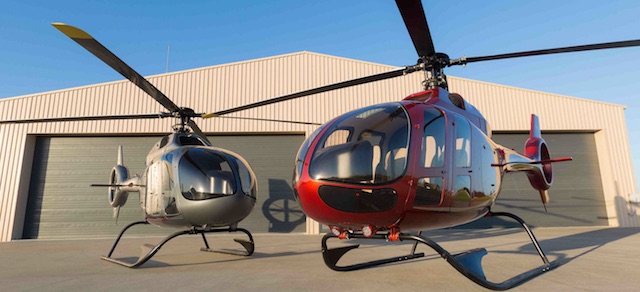Flight tests of the KC630 light-single should resume by the end of the year after New Zealand-based Composite Helicopters integrates design changes adopted following a non-fatal crash of a prototype in November.
The Auckland-based start-up now expects to achieve type certification in 2017 of the Rolls-Royce RR300-powered KC630, followed a year later by certification of the R-R M250 C20B-powered KC640, says chief designer Peter Maloney, who survived the November incident.
The company also plans to introduce a slightly more powerful KC650 helicopter, but has not yet selected an engine. Options include the R-R M250 C30 and the Honeywell LTS101, Maloney says.
Seeking to introduce an all-composite airframe in the light helicopter market, the company’s family of aircraft designs are aimed squarely at short-range, light-single segment dominated by the RR300-powered Robinson R66. Bell Helicopter, meanwhile, plans to re-enter the segment later this year with the Turbomeca Arrius 2R-powered 505 Jet Ranger X.
“Competition is healthy,” Maloney says. “It makes us all better.”

Composite Helicopters
Though two years away from type certification, Composite Helicopters decided to exhibit for the first time at Heli-Expo this year and through 4 March had collected more than 80 signed “expressions of interest” from potential buyers, he says.
The appearance also vividly shows that the high-profile flight test crash in November is not slowing the company’s marketing efforts. In January, the company released a video showing the aircraft losing control at about 500ft and plunging to the ground in the New Zealand countryside. The aircraft rolled on its left side after impact, but no one was hurt.
Maloney attributes his survival to the strength of the all-composite airframe. The design integrates three different carbonfibre manufacturing processes – pre-preg, resin infusion and resin-transfer moulding, he says. Compared with an aluminium structure, the out-of-autoclave-cured resin dissipates impact forces more effectively, he says.
An independent analysis has attributed the cause of the crash to a manufacturing flaw in a certificated part – a component of the swashplate that translates flight control inputs into movements by the spinning rotor blades, Maloney says.
Composite Helicopters has strengthened the rotor assembly with a second scissor link in case a manufacturing defect causes a similar problem in the future, he says.
Source: FlightGlobal.com


























